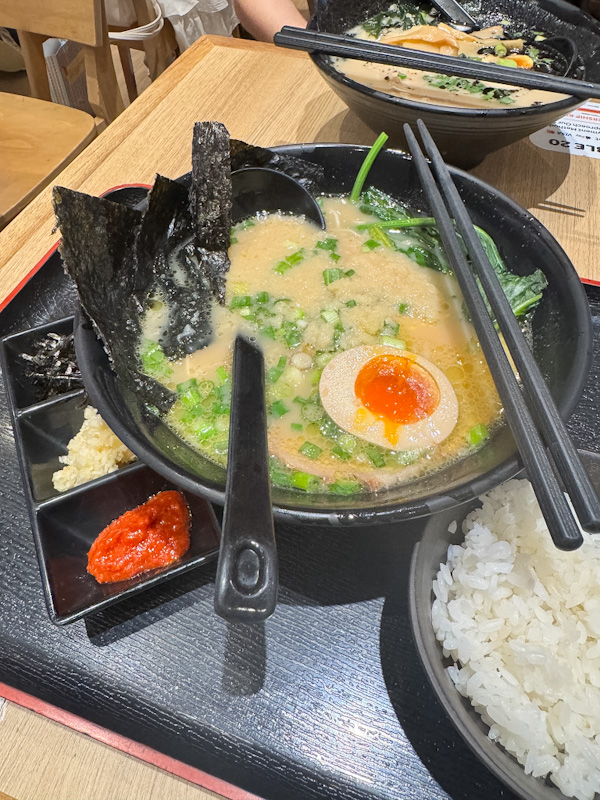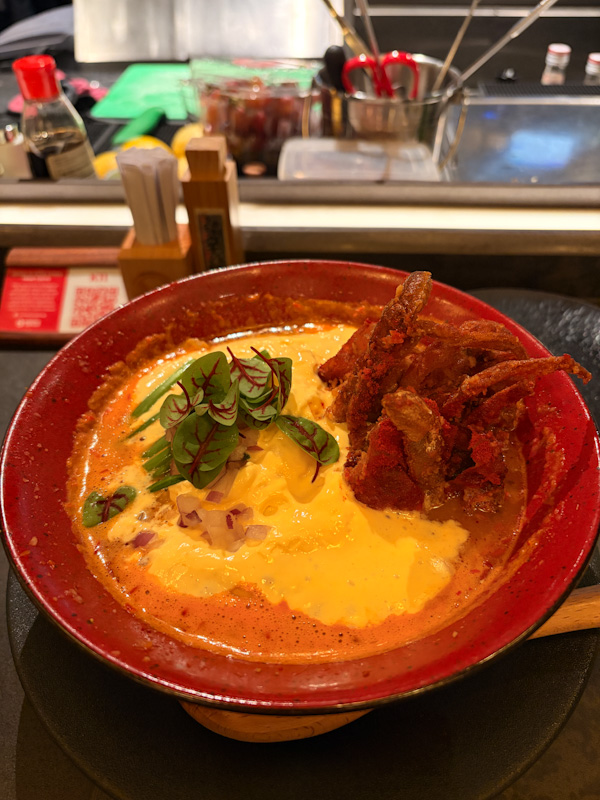WHAT WE ATE
- Lobster Tomato Cream Ramen – 85/100, Tokyo, 12 July 2025
- Lobster Spice Curry Ramen – 80/100, Tokyo, 12 July 2025
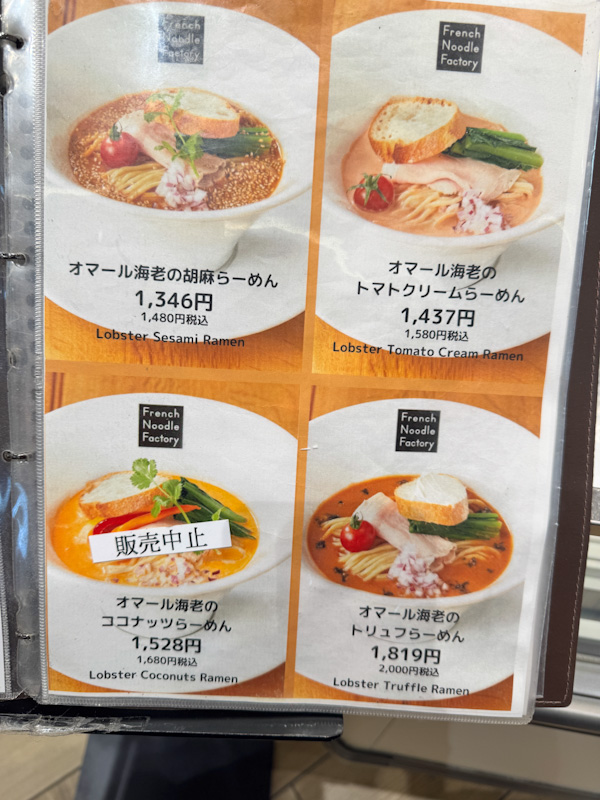
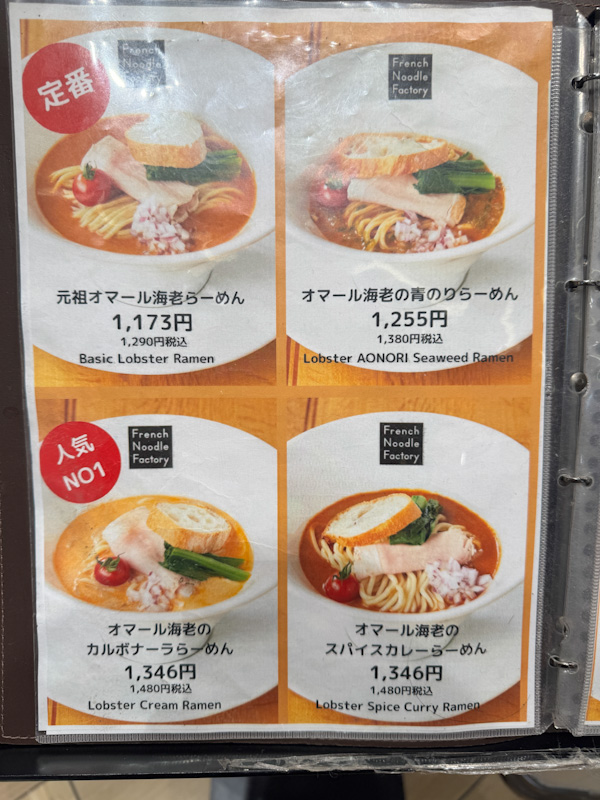
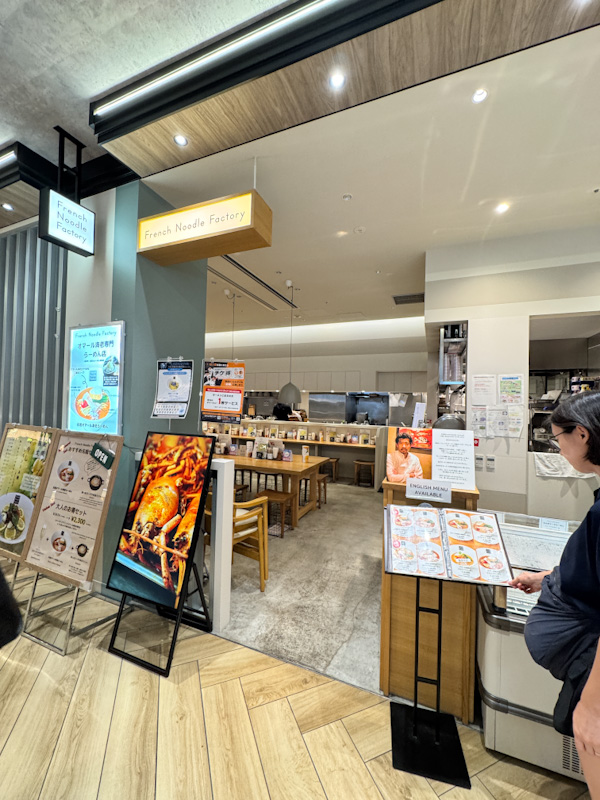
Tucked inside Tokyo Dome City’s LaQua food hall, French Noodle Factory reimagines ramen in Tokyo through the lens of French culinary technique. This is the sister restaurant of Ebimaru, and both shops share a clear obsession: bold, seafood-forward broths. At French Noodle Factory, expect lobster bisque to take centre stage—infused into creamy, savoury bowls that riff off ramen tradition without abandoning it.
If you’re exploring ramen in Tokyo and curious about cross-genre creativity, this place is worth a detour. From truffle twists to curry bisque versions, the menu stays tightly focused on its lobster-first concept—making it one of those shops that quietly lingers on your radar after just one visit.
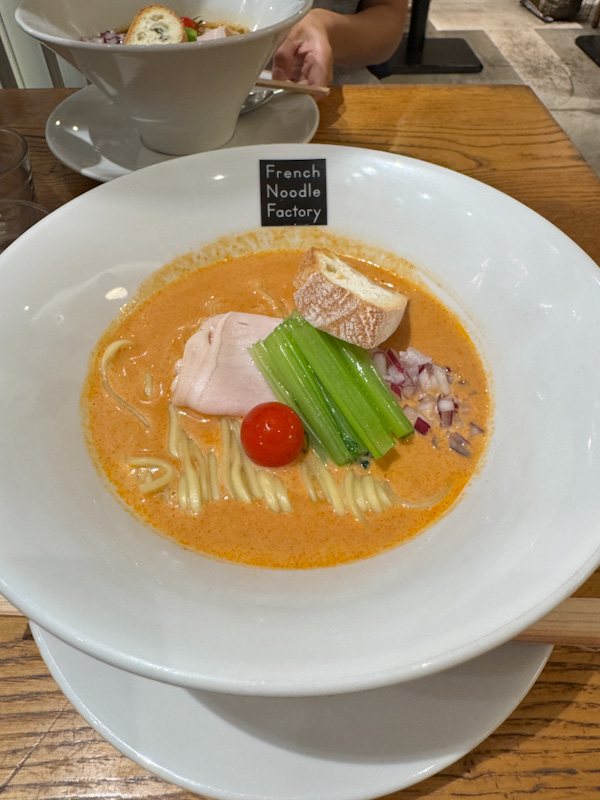
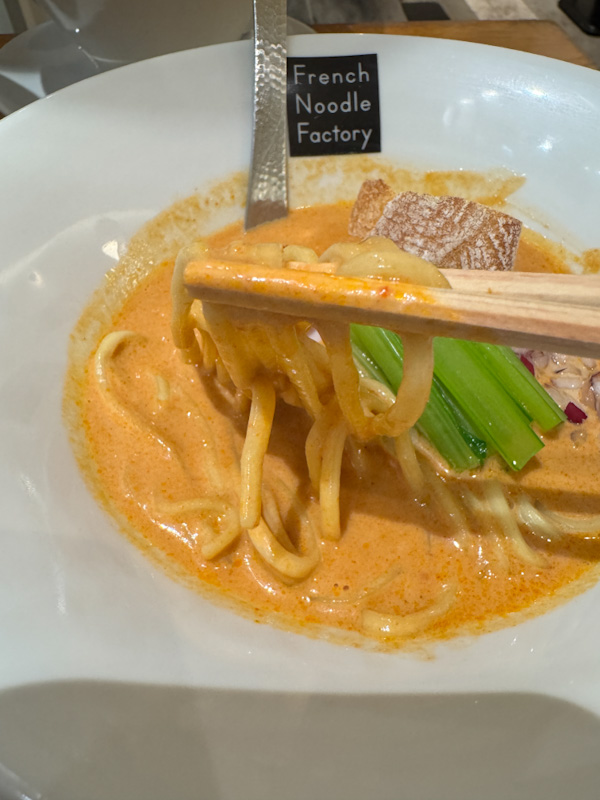
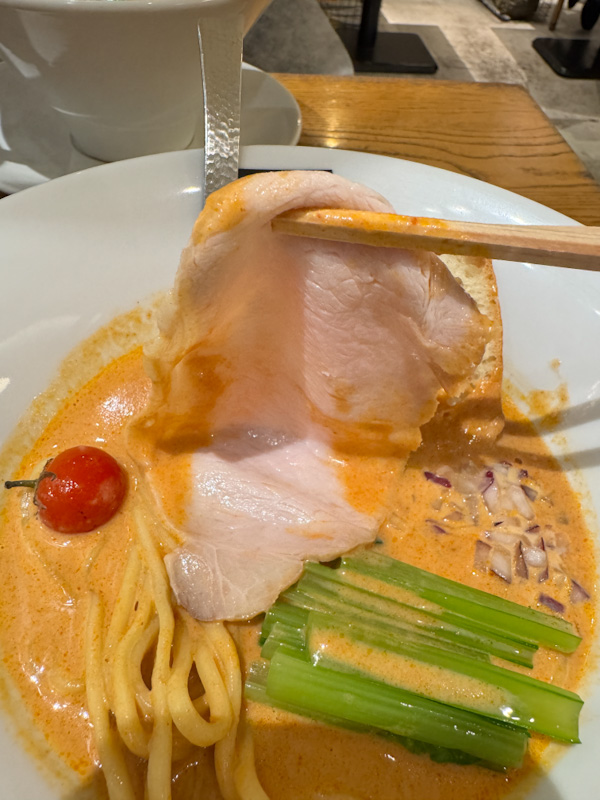
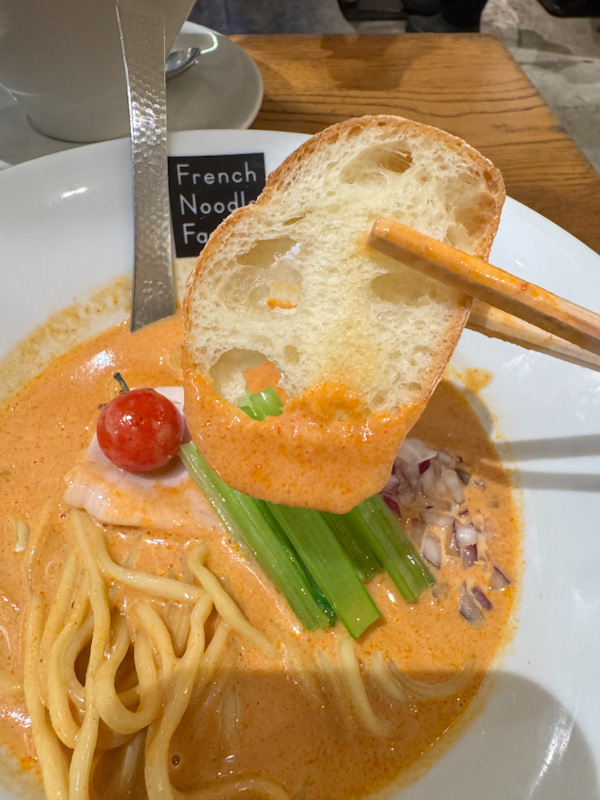
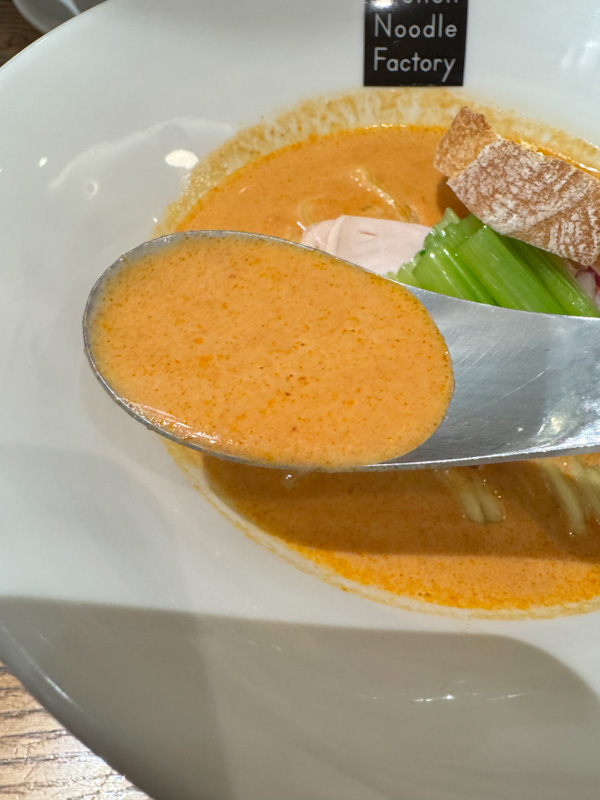
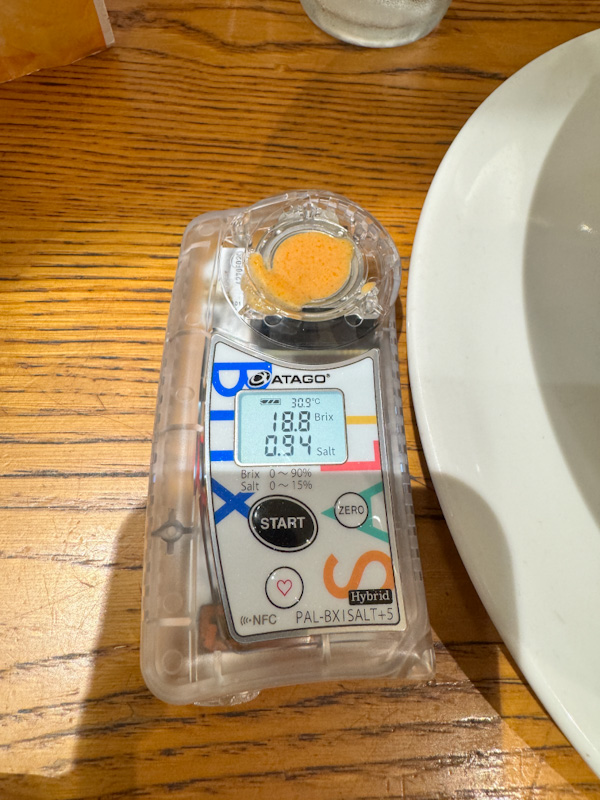
Lobster Tomato Cream Ramen: 85/100
Noodle: 35/35
Same noodles as the ones used in its sister restaurant Ebimaru — thick, flattish, and served al dente. They’ve got a chewy, springy texture with a firm core and a bold wheat flavour that leans earthy and nutty. In a rich, bisque-style soup like this, these noodles really shine. Their straight, thick profile picks up just the right amount of broth, turning each slurp into an amplified mix of wheat and lobster. Nothing to fault here.
Soup: 30/35
Similar in concept to the Lobster Cream Ramen at Ebimaru, but with a noticeably sweeter profile. The soup is rich and bisque-like — creamy, buttery smooth, and full-bodied. But the lobster flavour here is more muted. The familiar briny punch takes a backseat, and that umami-laden oceanic kick is missed.
There’s a fruity sweetness from the tomato that lifts the broth slightly, and a faint sour tang that lingers at the end. It’s well-balanced and clean, but compared to the regular Lobster Cream version, this felt a little caught in between — not fully lobster, not fully tomato.
A dash of black pepper helps add dimension mid-meal. It gives the broth a mild heat and depth, working as a nice finishing touch. On its own, it’s still a strong, cohesive soup. But having tasted the original version, this one doesn’t quite hit the same highs.
Meat: 10/20
Only one slice of pork chashu in this bowl — thinner but large, and folded neatly. The lean meat is tender and soft with a slight chew, while the fatty parts are a bit more elastic than ideal, lacking that melt-in-your-mouth finish.
Flavour-wise, the marination is light, allowing the natural porkiness to come through — though here, it leans a little too strongly into that porky flavour. Compared to the version at Ebimaru, the difference is noticeable. At Ebimaru, the menu clearly specifies the pork sourcing from Hida Takayama, and the quality reflects that. At French Noodle Factory, the menu is more minimal, and the chashu feels less refined — possibly a different cut, sourcing or preparation method altogether. As a result, it lacks the finesse of the original.
Other Toppings: 10/10
Toppings are familiar — almost identical to the ones served at Ebimaru, and they work just as well.
- A small slice of bread: crunchy when dry, excellent when soaked in broth.
- Stir-fried greens (likely bok choy): add a light bitter note and help reset the palate.
- Diced onions: bright and sharp, cutting through the creaminess.
- A cherry tomato: rounds off the meal with a pop of sweet acidity that pulls all the elements together.
Summary
This is still a very good bowl of ramen — just a slightly sweeter and gentler take on its sibling. You get all the creamy richness you’d expect, but at the cost of that deep briny umami Ebimaru nails so well. If you’re after balance and approachability, this bowl delivers. But if you’re looking for intensity and a stronger crustacean hit, I’d recommend heading straight to Ebimaru.
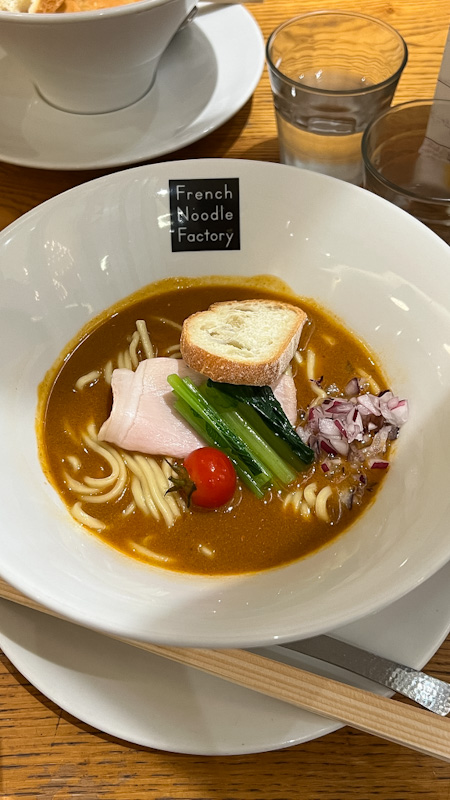
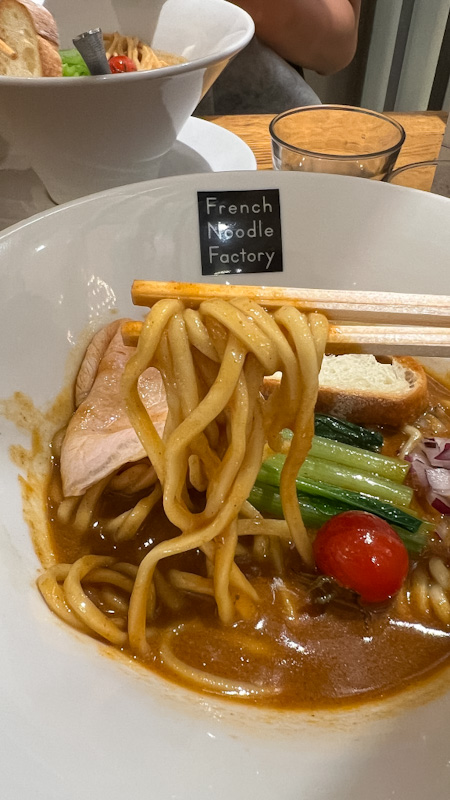
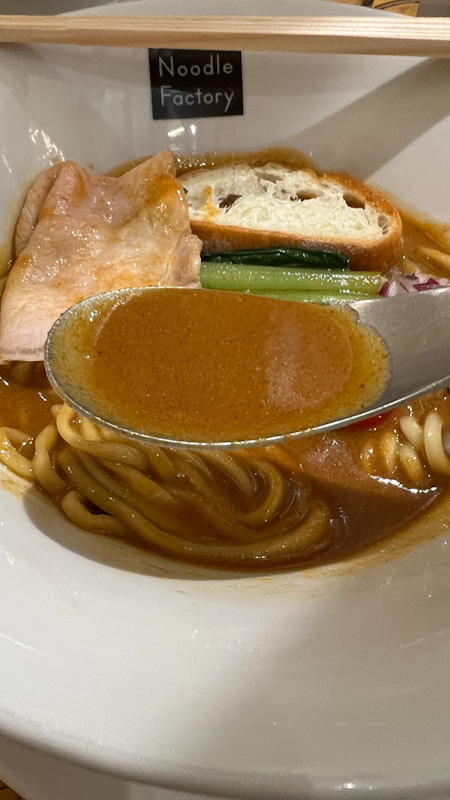
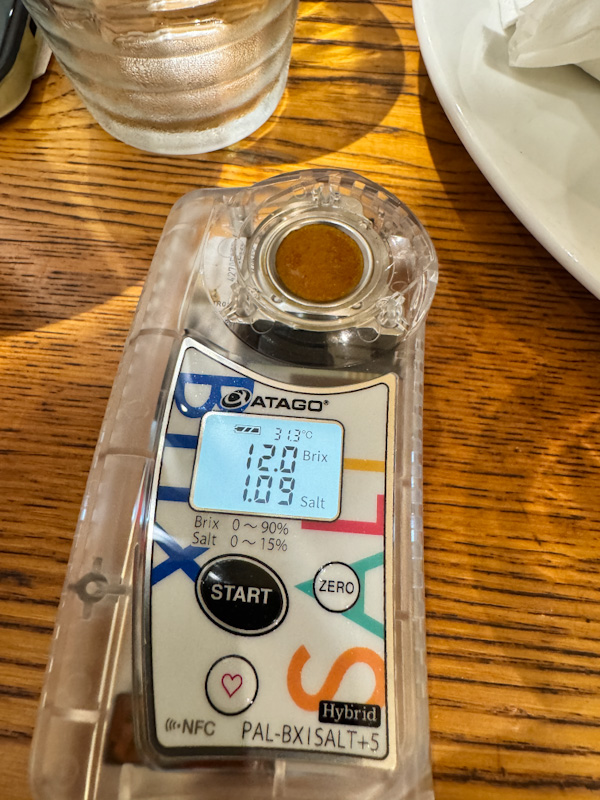
Lobster Spice Curry Ramen: 80/100
Noodle: 35/35
Same noodles as the ones used in its sister restaurant Ebimaru — thick, flattish, and served al dente. They’ve got a chewy, springy texture with a firm core and a bold wheat flavour that leans earthy and nutty. In a rich, bisque-style soup like this, these noodles really shine. Their straight, thick profile picks up just the right amount of broth, turning each slurp into an amplified mix of wheat and lobster. Nothing to fault here.
Soup: 25/35
This curry version is a major departure from the other bowls on the menu.
The broth is noticeably thicker and carries a grittier texture. It doesn’t come across as creamy — more dense and rustic. Spice is the dominant force here. The aroma hits hard, and the flavour opens with bold, pungent spices. That quickly settles into a savoury-sweet body, before giving way to a lingering, fiery burn.
The curry flavour itself is well done, but it dominates the bowl to the point where the lobster broth becomes an afterthought. The briny nuances are mostly masked, leaving only a faint echo of lobster — something only noticeable if you know what to look for. Without prior knowledge of the base, most would assume this is a straight-up curry ramen.
Meat: 10/20
The same chashu is used here. Only one slice of pork chashu in this bowl — thinner but large, and folded neatly. The lean meat is tender and soft with a slight chew, while the fatty parts are a bit more elastic than ideal, lacking that melt-in-your-mouth finish.
Flavour-wise, the marination is light, allowing the natural porkiness to come through — though here, it leans a little too strongly into that porky flavour.
Other Toppings: 10/10
Same toppings as the other bowls here — familiar, and they still work well even in this curry variation.
- A small slice of bread: Crunchy when dry, excellent when soaked in broth. Particularly good here — like dipping baguette in a rich curry stew.
- Stir-fried greens (likely bok choy): Adds a light bitterness that helps cut through the spice and resets the palate.
- Diced onions: Bright, sharp bursts that contrast well with the curry’s density.
- A cherry tomato: A pop of sweet acidity to round off the bowl — small touch, big impact.
Summary
A bold, spice-forward curry ramen that takes the base in a completely different direction. If you’re in the mood for lobster, this may not be the bowl — the curry overpowers most of the seafood depth. But as a standalone curry ramen, it’s flavourful and satisfying. The toppings and noodles still hold up well, and there’s a clear effort in crafting something distinct. Just don’t expect it to taste like lobster.
DISCLAIMER
One man’s meat is another man’s poison.
Find out more about our palettes and how we evaluate our ramen here. 😉

